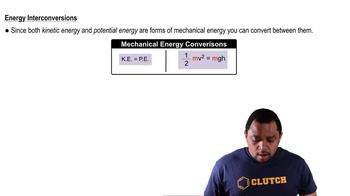Here are the essential concepts you must grasp in order to answer the question correctly.
Electrostatic Potential Maps
Electrostatic potential maps visually represent the distribution of electron density in a molecule. Areas of high electron density appear in red, indicating regions of negative charge, while blue areas represent low electron density or positive charge. These maps help in understanding molecular polarity and reactivity, which are crucial for predicting how molecules will interact with each other.
Recommended video:
Kinetic & Potential Energy
Molecular Structure and Functional Groups
The molecular structure of compounds, including their functional groups, significantly influences their chemical properties and behavior. For instance, acetaldehyde contains a carbonyl group, while ethanol has a hydroxyl group. Recognizing these functional groups allows for the identification of molecules based on their electrostatic potential maps, as different groups will affect electron distribution differently.
Recommended video:
Functional Groups Example
Polarity and Intermolecular Forces
Polarity arises from the uneven distribution of electron density within a molecule, leading to partial positive and negative charges. This polarity affects intermolecular forces such as hydrogen bonding, dipole-dipole interactions, and London dispersion forces. Understanding these concepts is essential for predicting the physical properties of substances, such as boiling points and solubility, which can be inferred from their electrostatic potential maps.
Recommended video:
Intermolecular vs Intramolecular Forces





